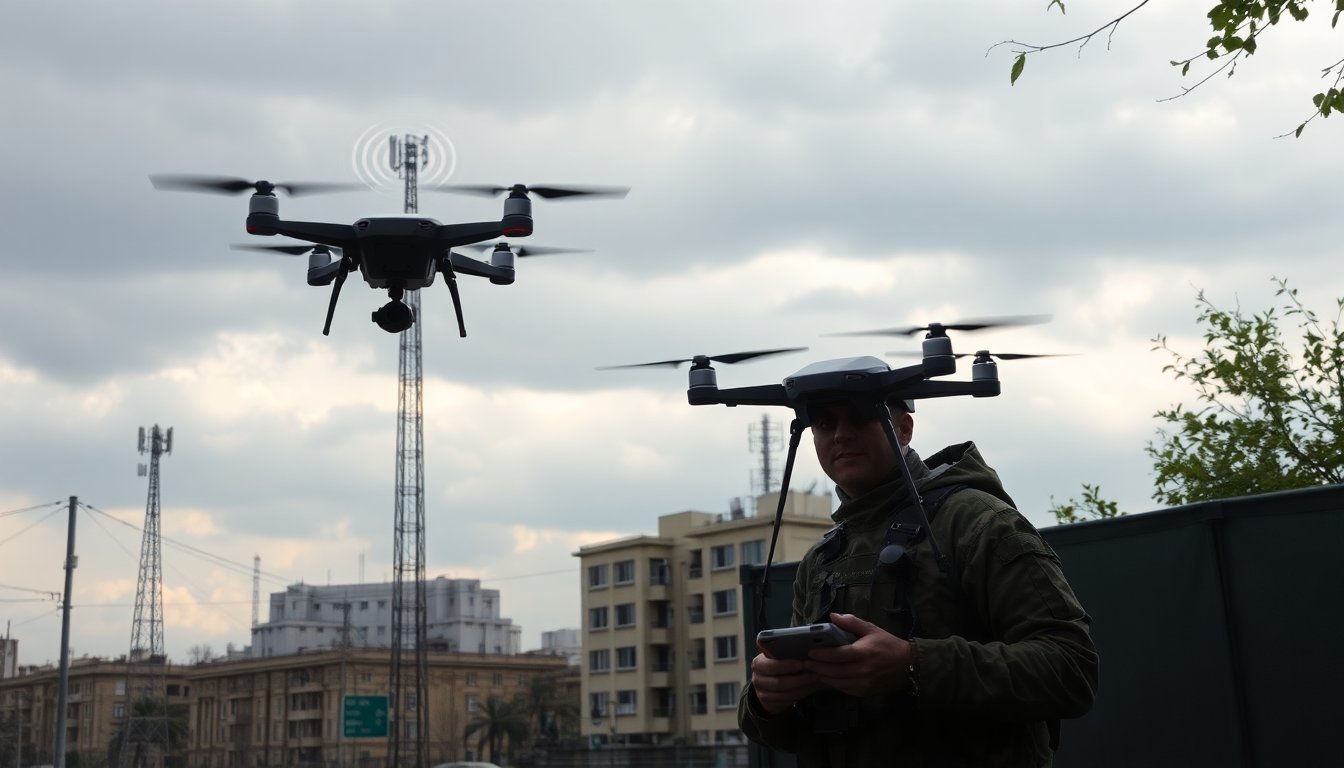Table of Contents
On November 10, Russia enacted a controversial measure known as SIM card cooling. This strategy involves temporarily disabling mobile internet access for SIM cards that connect to foreign networks while roaming or remain inactive for more than 72 hours. The official objective of this regulation is to disrupt Ukrainian drones that rely on LTE modems from accessing Russian mobile networks during their operations. However, the practical implications of this tactic prompt questions about its overall effectiveness. For travelers and residents in border regions, this regulation can lead to significant inconveniences, as their SIM cards are also affected by this ‘cooling’ process.
Understanding the implications of drone operations in the ongoing conflict requires an examination of their control mechanisms. A significant number of military drones operate independently from mobile networks, utilizing two-way radio or fiber-optic cables for control. However, a notable trend is the deployment of drones equipped with LTE modems, particularly over Ukrainian territory.
Analyzing the policy on international SIM card usage
The Digital Development Ministry of Russia has implemented a policy requiring mobile operators to limit internet access for SIM cards that have roamed internationally or remained inactive for a designated period. During this cooling phase, users retain access to a restricted selection of government-approved websites, which include vital services and Russian social media platforms.
The CAPTCHA challenge
Users seeking to regain access must complete a CAPTCHA verification sent by their mobile service provider. However, this system does not apply universally across all mobile operators, leaving those with incompatible devices struggling to lift the block. This initiative aims to prevent SIM cards installed in Ukrainian drones from connecting to Russian networks during military operations.
Understanding the limitations of the cooling strategy
It is important to note that most military drones currently in use do not rely on mobile communications. Instead, they use advanced navigation systems that include inertial and satellite navigation. While the inertial navigation system is more resistant to interference, it does accumulate errors over time. This necessitates corrections from satellite signals, which can be susceptible to jamming and spoofing.
In response to emerging vulnerabilities, both Russia and Ukraine have implemented advanced countermeasures. Russian Shahed/Geran drones, for example, utilize sophisticated navigation technology that combines multiple satellite receivers. This integration allows the drones to filter out misleading signals. While mobile networks could theoretically improve drone navigation, their reliability in conflict zones is questionable due to the risk of complete shutdowns.
The role of mobile communication in drone operations
Despite these limitations, there have been cases where downed drones revealed mobile modems capable of transmitting telemetry data back to command units. This capability offers valuable insights for future operations, especially in regions where traditional communication methods encounter interference. However, video transmission through mobile modems faces challenges, including lag, which diminishes its effectiveness for targeting moving objects.
Challenges in drone interceptions faced by Ukraine
Recent reports indicate a decline in the effectiveness of Ukraine’s air defense systems, with interception rates for Russian drones dropping to around 80% in October. This decrease is linked to multiple factors, including an increase in the volume of drones launched by Russia and possible shortages of munitions within Ukraine.
The Ukrainian air force is further hindered by the extensive damage to critical infrastructure resulting from ongoing aerial attacks. As winter approaches, the strain on Ukraine’s energy grid escalates, leading to significant power outages in various regions.
The human cost of aerial warfare
The conflict in Ukraine remains intense, with significant civilian casualties reported due to ongoing Russian airstrikes. President Volodymyr Zelenskyy has called for urgent assistance from Western allies, stressing that Ukraine’s current air defense systems are insufficient to meet the escalating threats.
While Russia’s initiative to disrupt communication through SIM card cooling may offer some deterrence, its overall impact on drone warfare appears limited. Ukrainian forces have reportedly devised strategies to neutralize enemy SIM cards mid-flight, illustrating the complexities and challenges of modern warfare.


